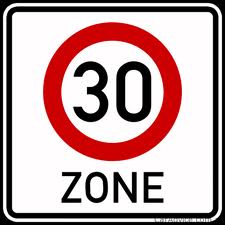
Here is something to think about: it is easier for companies to achieve a 30% inventory reduction than a 3% reduction.
I know that this statement is counter-intuitive so you may be saying to yourself: How can that be, surely achieving a lower target is easier than achieving a higher target? After all, don’t you need to achieve 3% before you can get to 30%? Ok, good points, so let me explain.
The teachings of continuous improvement tell us that we can reach our goals by taking many small steps. This is incremental improvement and in many environments this works really well. Consider where a company executes cost reduction initiatives with goals of (say) 3% each year.
However, this approach only really works well where the cost base is reasonably constant and reasonably predictable. For example, if a company reduces its warehousing costs by using less outside storage, the cost of using that storage is both reasonably constant and predictable (as it is likely based on sq ft or per pallet). But these characteristics do not apply to MRO and spare parts inventory.
MRO and Spare Parts Are Different
MRO and spare parts inventory values vary significantly, depending on where each item is in its own cycle of usage and replenishment. For example, if you hold an item with a MAX that is twice the MIN then the value held for that individual item will vary by 50%. I accept that if the usage is predicable then for an individual item the inventory level would also be predictable but most companies hold spare parts inventory because they can’t predict their usage requirements. When you extend that thinking across thousands or tens of thousands of items then it would take quite a model to be able to predict inventory levels with accuracy better than +/-3%.
In fact influencing your inventory by 3% is actually quite easy. If your stock turn is 0.5 then, on average, you re-purchase 3% of your inventory every three weeks. If your stock turn is 1.0 then you repurchase 3% of your inventory every 11 days. So, if your inventory reduction target is just 3% then you can achieve this by delaying orders just prior to the point in time when the value is measured. This is hardly a sustainable strategy as the company will purchase the inventory once that measurement date has passed.
In addition, when you are using and repurchasing 3% of inventory every few weeks, then your total inventory value will have a natural ‘rise and fall’, just not as great as an individual item. And this is why 3% is hard to achieve, because the target is most likely within the limit of the normal rise and fall of your inventory value and so you cannot reliably measure the result. From a control perspective it is basically all noise.
Now consider a 30% inventory reduction target.
To achieve a target like 30% takes real action. It is not incremental; it is a genuine step change. It requires the input of different departments and the application of the ‘7 Actions for Inventory Reduction’. It takes commitment. And it delivers sustainable results because the changes that you make to achieve a 30% reduction are both genuine and long lasting.
So, next time someone wants to set an incremental improvement target for the total inventory value, just remind them that, in this area, increments are harder to achieve on a lasting basis than step changes. In fact, applying incremental change targets may just be setting you up for failure.